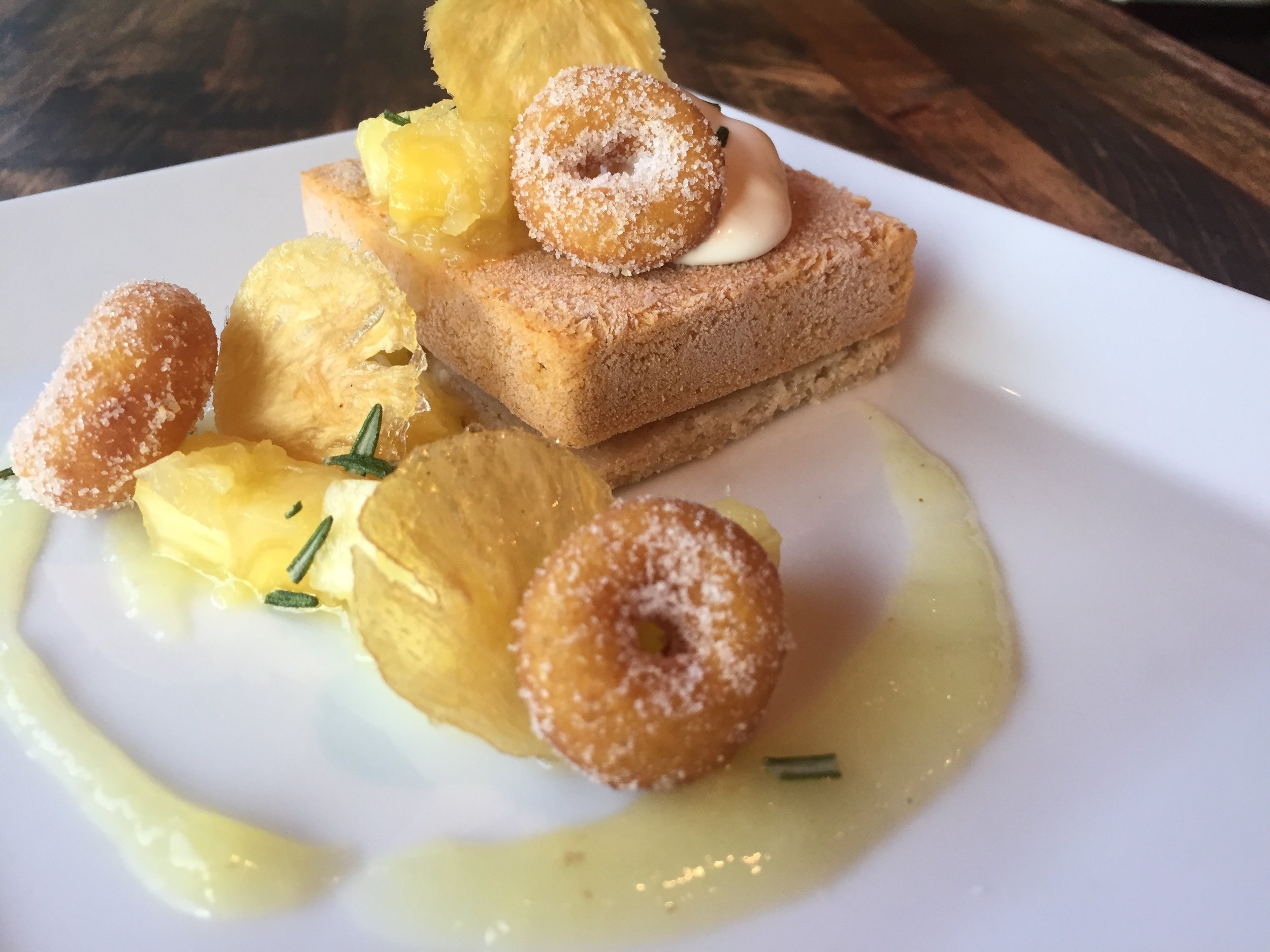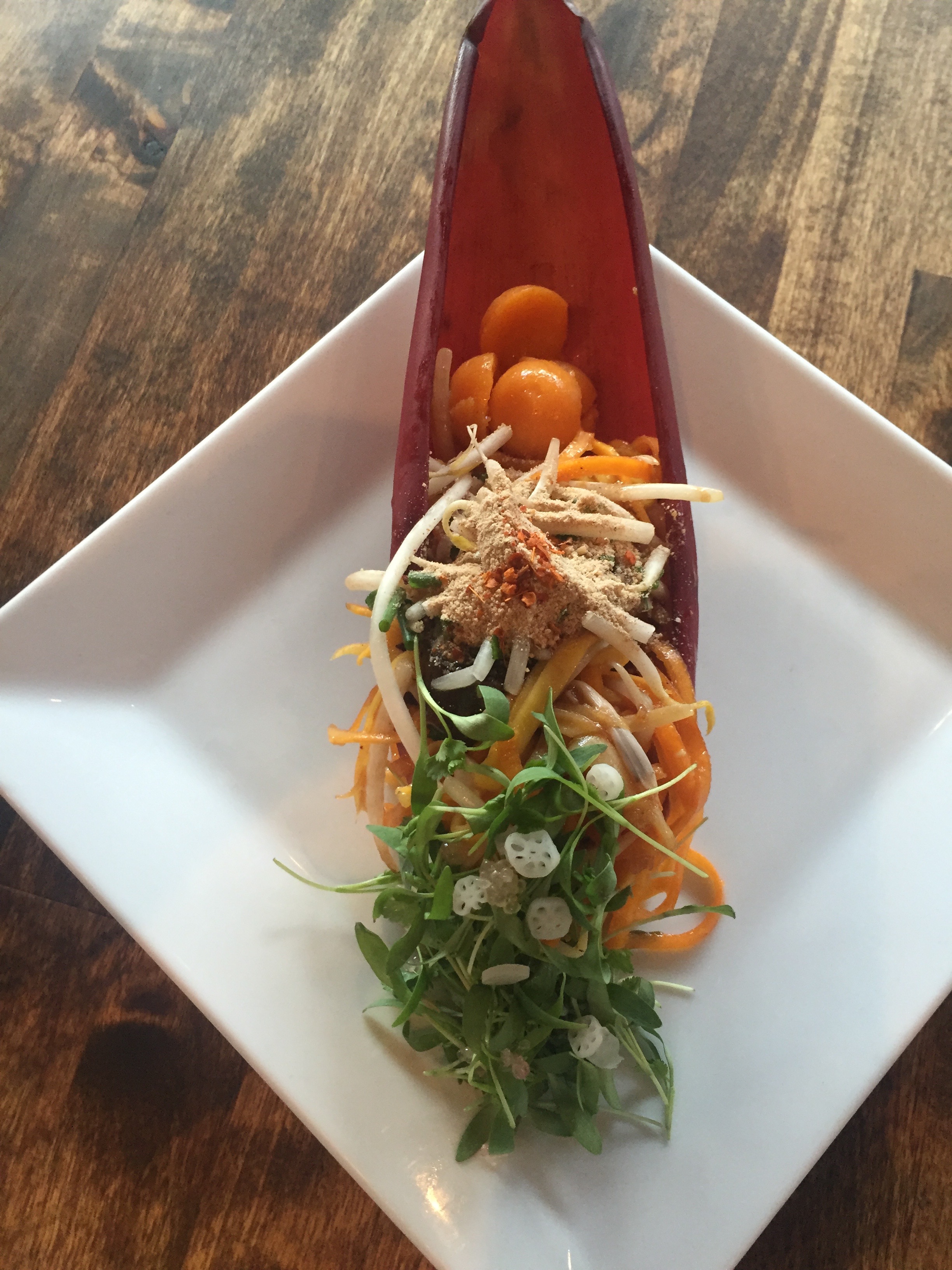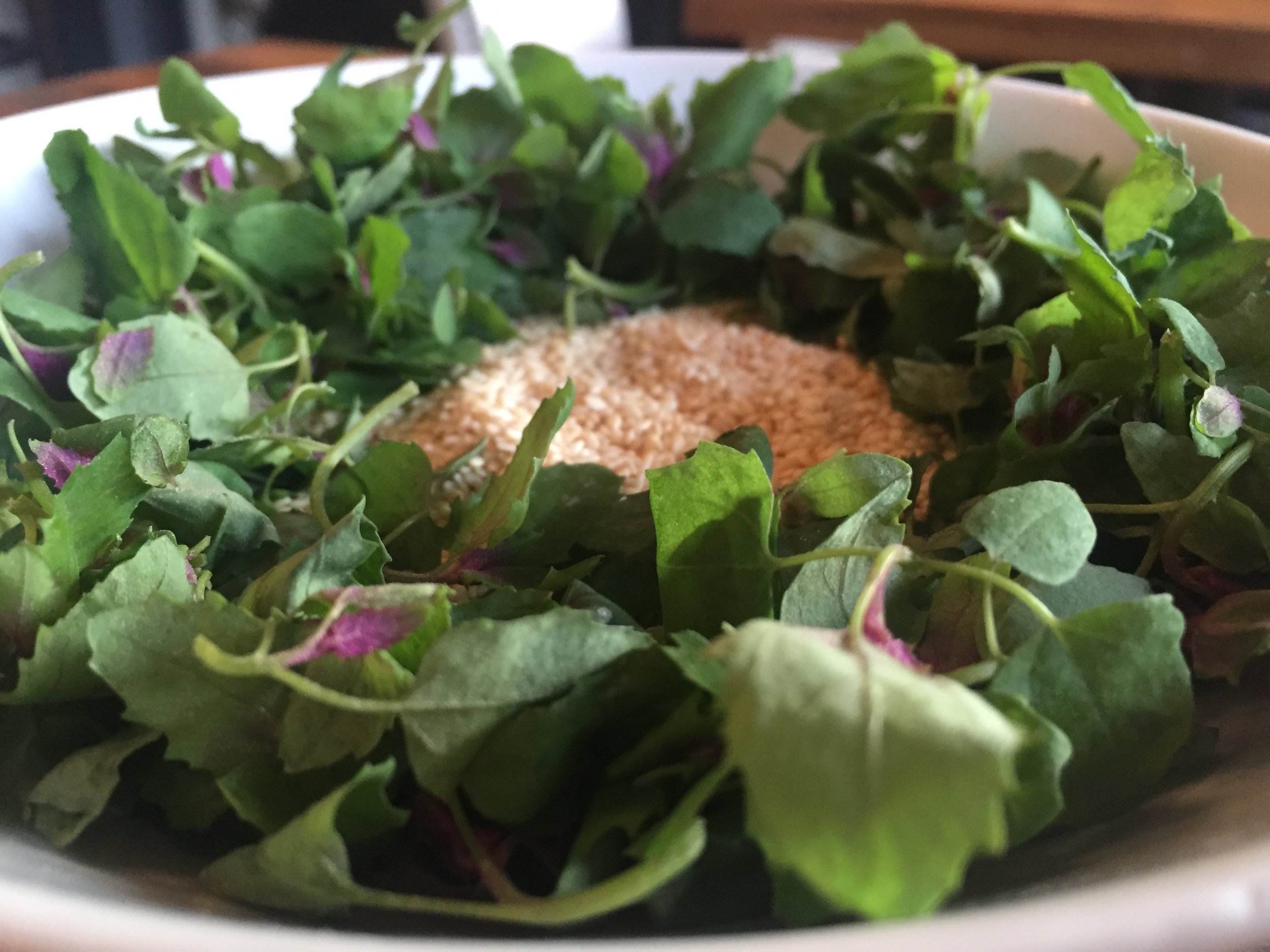Amanda Cohen is the Canadian chef and owner of the restaurant, Dirt Candy, located in New York City. Her award-winning establishment was the city’s first vegetable-focused restaurant and is widely regarded as a key leader and innovator of the vegetable advocacy movement. In 2012, Cohen released her own cookbook, Dirt Candy: A Cookbook; the first graphic novel cookbook to be published in North America.
Dirt Candy is known as a vegetable restaurant, as opposed to vegetarian; is there a connotation of the word vegetarian that you want to avoid?
For years, I think the term ‘vegetarian’ has been associated with a ‘lifestyle restaurant’ as opposed to the quality of the food. It was about giving vegetarians options for a place to eat - it didn't really matter whether the food was good or bad. Opening Dirt Candy, 8 years ago, we really wanted to separate ourselves. We wanted to say, the fact that we don’t serve meat is neither here nor there, what we’re really trying to do is celebrate vegetables. Dirt Candy is all about the food. The restaurant has never had any political connotations; the only philosophy behind the restaurant was simple - let’s serve good food.
So, why only vegetables; why not fruit?
Well, Fruitarians; kind of odd people. *laughs* When I first opened the restaurant, I didn't know that it was going to be solely focused on vegetables; that developed with our personality during those opening months. We knew immediately that there would be no meat, that’s the way I learned how to cook and it’s the way I like to eat. I still haven't found a piece of meat that makes a vegetable taste better. Once opened, the idea behind the restaurant became ingrained quickly. I looked around and thought, it’s an amazing thing: there are thousands of exclusively steak, hamburger, fish and chicken restaurants, so it’s bizarre that there’s not a single restaurant anywhere that’s dedicated to vegetables. I knew I could utilize that niche. When we were trying to figure out a name for the place, I thought we were going to have more fruit at the restaurant. My husband suggested that we call the restaurant ‘Dirt Candy and Tree Meat’ (“tree meat”, being the fruit) -- I thought that sounded gross.
Did the restaurant immediately receive a lot of support from the community?
We were lucky because, as a non-meat serving restaurant, we had a dedicated customer base from the start. Geographically, there weren't many vegetarian restaurants when we started, so we hit that market immediately. Our real customer base, however, the one that’s propelled us and allowed us to open up a bigger restaurant, is omnivores -- simply, because they’re a bigger group. It took longer for them to find us but, once they did, they kept coming back. That was probably about six months to a year after we opened, before we started noticing those regulars.
I can imagine they would’ve been a much tougher audience than the vegetarians to convince into eating at a vegetable-only restaurant.
As I was looking at the food scene, I saw that there were all of these vegetarian restaurants that fulfilled that healthy lifestyle niche, but that's not how most people want to eat, necessarily, at a restaurant. I said, let’s get flavour and decadence into vegetables, and that’s how we’ll get people to eat them. That really set us apart.
Naturally, as a chef it’s understandable that you’d just want your food to be taken seriously, not necessarily for being vegetarian but, instead, for just being great food.
Yes -- Previous movements towards supporting increased vegetable consumption have been based around various things, mostly health related, but flavour has never been the linchpin. The result of this is a giant cluster of bad vegetarian restaurants.
We haven't seen the, ‘eat vegetables because they’re delicious movement’, yet, have we?
Right - but momentum has shifted in the last couple of years. We now have chefs that are realizing this whole other world out there. People are talking about vegetables and eating healthier, and we now have these very talented chefs who are focusing on vegetables for the first time.
I love how you said in a previous interview, “Treat your vegetables with the same respect that you would treat a piece of meat”. How would you like to see the role of vegetables change in the kitchen?
I’d like them to stop being an afterthought. It’s already been said -- this is the year of the vegetable; this is the year of kale -- but the truth is, it’s not. It’s still the year of meat; it’s always been the year of meat. What you have is vegetables being treated like second-class citizens in the kitchen; we’re still not moving them to the center of the plate. That’s the balance that will really push our creativity and get people to eat more vegetables. As chefs, it’s our responsibility to do this, because if we don’t do it, no-one else will. Well, actually, big companies will do it and then chefs will have lost out. Right now, I’m seeing big food companies gaining interest in vegetables, which means that the point of view of the chef is going to be pushed aside, in the same way that big companies have taken over organics.
Chefs certainly have a huge amount of power in influencing people’s relationships with food.
Yes - We are in the era of celebrity chefs and foodies. However, where’s the vegetarian cooking show on the food network, or even a vegetable cooking show? Somehow, we’re still in that mentality that vegetables don’t sell and, yes, that’s actually true, but if we want this to ever change, we have to start making the conscious decisions required to make it happen.
What do you think surprises people most about your food at Dirt Candy?
That it’s actually filling! That’s the comment that we hear most often. People are like - “I thought I was going to have to get a slice of pizza afterwards”, instead they leave full. Yes -- we’re a real restaurant, we have real food, and we’re not just going to give you ten different salads. Alternatively, others expect that it’s going to be much lighter and that there would be more vegetables on each plate, but we’re a restaurant and this is what we’re supposed to do. We’re supposed to make you think about food differently, to crave it and want it; it’s not about just giving you a lettuce leaf.
Many people are probably surprised that you can actually create so many more interesting dishes from vegetables than just salads.
Right, and we don’t use a lot of grains either, so there’s no filler - it’s all vegetables.
Does that become expensive, working without those filler (and generally, cheaper) ingredients?
Yes, because vegetables are an incredible amount of labour. When you think about a plate and how much food has to go onto it, when adding a cup of rice, for example, that accounts for the balance of the food on the plate - we don’t really have that.
With the high costs of working with only vegetables in mind, do you think that it’s realistic to expect that many other restaurants will follow in the footsteps of Dirt Candy?
If everyone started working with and serving more vegetables, we’d all be able to raise our prices across the board; then it wouldn't seem so expensive. One of the problems that we have in the States, is that we don’t charge enough for the food that we sell at restaurants. Some restaurants make it up through alcohol sales when, the truth is, we should be making it up on what we’re selling, which is food. When thinking about the intricacies of a food chain, you realize how complicated it is and what goes into it. If I’m buying carrots, I go through a purveyor who pays a distributer, who pays a farmer, who pays their labourers, who all have families to feed - we’re talking about one carrot that I’m buying for less than a dollar. It’s insane, how little we pay for food, including meat. I stand by the belief that all food prices should be raised in restaurants.
That has a lot to do with changing public perception of the value of the food on their plates.
That’s one of the big issues: value and perceived value. People are paying so little for the food; and they don’t realize that price includes my rent, insurance, staff and even the toilet paper in the bathroom -- it’s not all free. It’s about trying to get the customer to understand this.
Your recently published article in The New York Times, humorously tackles the relatable struggle of choosing between either eating locally and seasonally, or eating healthily, especially, during times of year when most fresh produce is unavailable, or in regions where many beloved ingredients are never locally grown. At the end of the day, what do you think takes priority; what we eat, or where it comes from?
That’s a tough one. Definitely, in the winter, it’s what we eat; whereas, in the summer, it’s a different issue. Again, I’m speaking for the States and we don’t have the healthiest nation. As a chef, I see it over and over again, people trying to convince everyone to go to farmers markets, eat seasonally and eat locally. The truth is, most people shop at supermarkets, they do it after work when it’s convenient and they’re short on time. They go in and wonder what they’re supposed to buy in the middle of winter, and just end up confused -- they return to their comfort food. If we could just convince people to eat more vegetables and to eat healthy, that’s better than being worried about where people are getting their tomatoes from in the middle of winter. In the article, people took issue to the fact that I was talking about tomatoes, but I could have used any example - I could’ve said lettuces. In the North East, there’s no such thing as a local lettuce in the middle of winter, yet we all eat salad and feel very virtuous. Somehome it’s still okay to eat salad but the tomato is wrong. When it’s available, it’s great! If you can afford it, access it, but not everybody can, even in the summer. It’s better to eat healthy - get some real food into you.
And when we think about changing consumer habits, if the ideal is to have everybody eventually eat healthy, locally and seasonally, we still have to identify where to start and what we prioritize.
Right, and that doesn't mean that the two can’t be talked about simultaneously. However, the bigger issue concerns how we are going to make America healthy. The statistics that I quoted in the paper, from the USCA, are really depressing. When you realize that potatoes and tomatoes, french fries and ketchup, essentially, are the most eaten vegetables in the United States -- It’s just depressing.
I live in this elite food world where you hear everyone proclaiming, ‘Kale! Kale!’ But when you look at the actual numbers for kale, the sales are around .002% -- they’re so low -- nobody’s eating kale. We might be eating it in New York City, but most people are not.
Lastly; if you were a vegetable, what would you be?
Probably, an onion -- I’ve got lot’s of different layers, I’m a little bitter, and sometimes I like to make people cry, but treat me right and I’m sweet.












